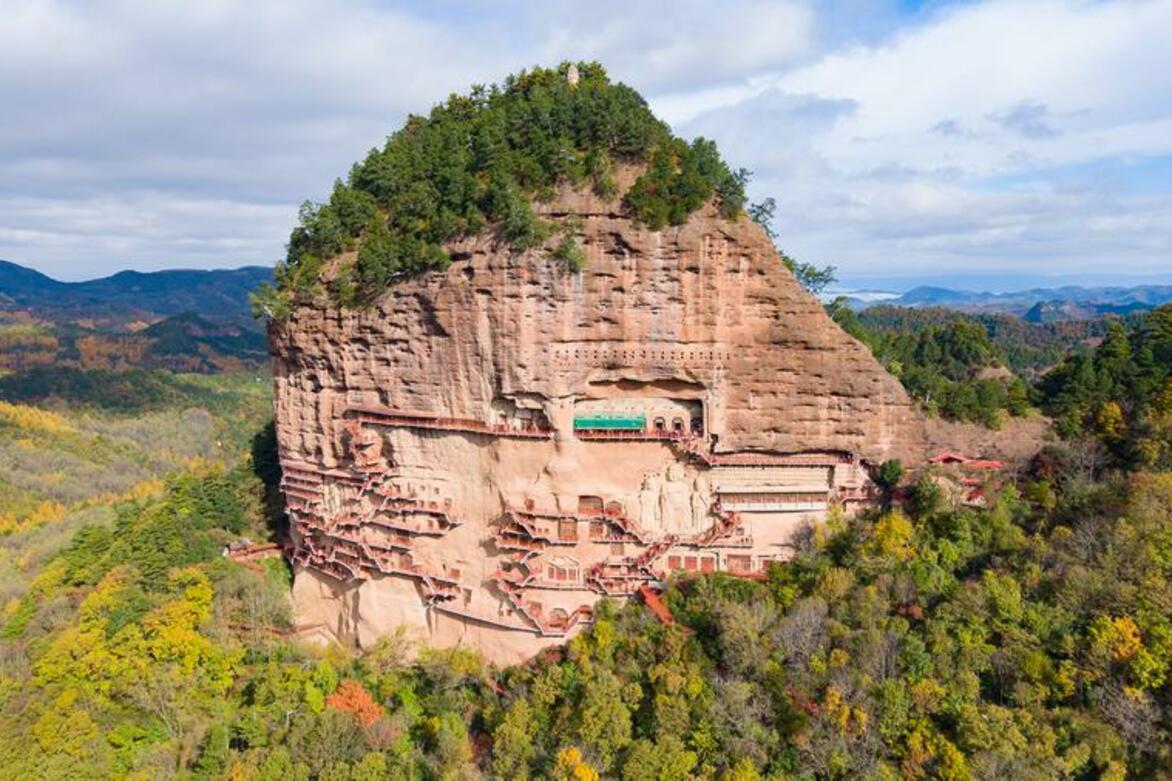China's aerial tourism the modern "journey to the west"
Xinhua
19 May 2025

LANZHOU, May 19 (Xinhua) -- Instead of climbing thousands of steps to see the centuries-old Buddhist sculptures carved into the towering cliff face, visitors to the Maiji Mountain Grottoes in northwest China have a new thrilling option: boarding an aircraft and enjoying a spectacular view from high in the sky.
The local scenic spot has launched an eVTOL (electric vertical takeoff and landing) aircraft program since March, offering visitors an opportunity to soar at an altitude of 300 meters and enjoy a bird's-eye view of the 1,600-year-old grottoes.
This aerial sightseeing service has infused heritage exploration with a futuristic vibe, giving visitors an unprecedented immersive experience.
"That should be the way we travel in the 21st century," a web user commented on a WeChat post.
This is just one of the latest examples of scenic spots in northwest China incorporating low-altitude technologies into tourism. As National Tourism Day marked on May 19, low-altitude tourism is now under a spotlight as the country prioritizes the orderly development of low-altitude sectors to stimulate consumption.
Home to a wealth of stunning natural and cultural attractions spread across vast distances, the northwest region is full of unique opportunities. Unlike the southern and eastern parts of China, which are relatively flat and often obscured by fog and rain, this high-altitude inland region with abundant sunshine is filled with mountains and canyons, making it an ideal landscape for aerial sightseeing.
For example, Xinjiang Uygur Autonomous Region alone boasts a flight area of around 1.8 million square km, accounting for one-sixth of the country's total. There are more than 320 days of good flying weather each year.
Deng Lili is one enthusiast. During the recent May Day holiday, she took a 25-minute helicopter ride from Shihezi City in northern Xinjiang, flying over some of the region's iconic landscapes, including the Tianshan Mountains and the Manas River Grand Canyon.
"It was gorgeous," she recalled with exhilaration. "Seeing the emerald rivers and winding red rocks from above was a truly fantastic experience."
In Gansu Province, sightseeing tours with aircraft and gliders over the Yellow River and alongside reservoirs have taken off over the past two years.
Known for its Danxia landforms, or reddish sandstone and rocks, the Zhangye Colorful Danxia Scenic Spot in Gansu is seeing more travelers trading traditional viewing strolls for the more thrilling experiences of helicopters and hot air balloons.
Visitors like Wang Jiao, from Henan Province in central China, described her recent aerial adventure as a sensory delight. "Flying above the multicolored ridges of weathered strata feels as if I could reach out and touch the vibrant hues with my fingertips."
According to the local tourism bureau, aerial tourism has evolved from a niche to sought-after choice, becoming a new growth driver in the industry.
Behind the success of aerial tourism is a strategic effort to drive China's emerging low-altitude economy, which refers to activities within airspace below 1,000 meters.
Since being highlighted in the nation's 2024 government work report as a "new engine for economic growth," many provincial regions in the country's west have begun formulating plans to accelerate the development of low-altitude economy. For instance, Xinjiang aims to build a total of 98 general aviation airports by 2035, equating to around 5.9 airports for every 100,000 square km once completed.
Data from the lifestyle app Xiaohongshu shows that topics related to drones in Xinjiang have garnered over 820,000 views, with many users sharing detailed tips on how to take picturesque drone photos. Some popular scenic areas have begun offering shared drone services and training for certified pilots.
Wei Xiang, a researcher at the Chinese Academy of Social Sciences who specializes in tourism market, said China's low-altitude tourism features integration of advanced aerial technologies.
Some cutting-edge flying vehicles, such as the "Land Aircraft Carrier," a flying car developed by Chinese EV company Xpeng, have made local headlines by conducting high-temperature and high-altitude tests in Xinjiang and Qinghai. Meanwhile, aviation enterprises in Xinjiang are exploring the deployment of EHang's EH216-S autonomous eVTOL aircraft for scenic tourism applications.
Wei attributed the advancements to China's strong manufacturing and innovation capabilities.
"China has an extremely comprehensive supply chain and system in the manufacturing sector, which accounts for the richness of low-altitude vehicles," Wei said.
Wei also calls for simplified airspace regulations, accelerated infrastructure development and enhanced talent cultivation to drive better development in this area.
